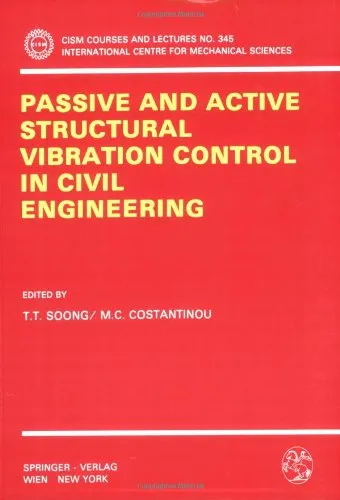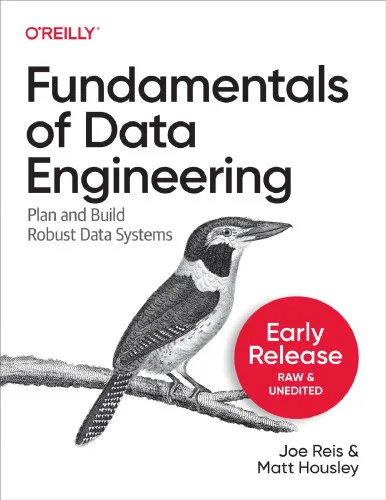Passive and Active Structural Vibration Control in Civil Engineering (CISM International Centre for Mechanical Sciences)
4.5
Reviews from our users

You Can Ask your questions from this book's AI after Login
Each download or ask from book AI costs 2 points. To earn more free points, please visit the Points Guide Page and complete some valuable actions.Related Refrences:
Introduction to Passive and Active Structural Vibration Control in Civil Engineering
Structural vibration control has emerged as a critical area in civil engineering, with advancements in technology enabling more effective strategies for mitigating the adverse effects of vibrations on large-scale structures. The book 'Passive and Active Structural Vibration Control in Civil Engineering' comprehensively explores the methods, principles, and applications of both passive and active approaches to vibration control. Authored by T.T. Soong and M.C. Costantinou, this work combines engineering theory with practical applications to serve as an essential resource for researchers, engineers, and students alike.
Detailed Summary of the Book
In this book, the authors delve into the fundamental principles of structural vibration control, dividing their analysis into passive and active control systems. Passive control systems, characterized by their simplicity and reliability, are thoroughly examined. These systems include base isolators, tuned mass dampers, and viscous dampers, among others, which function by dissipating energy or altering the dynamics of the structure to minimize vibrations. Active control systems, on the other hand, focus on automated mechanisms that actively respond to dynamic forces, making use of advanced sensors, actuators, and control algorithms.
The book provides an in-depth look at theoretical frameworks, mathematical modeling, and experimental data, showcasing the real-world efficacy of these systems. Practical implementations are described through case studies, ranging from high-rise buildings to bridges, highlighting the importance of vibration control in ensuring structural safety and performance. Additionally, the authors discuss emerging trends, such as semi-active and hybrid systems, which leverage the benefits of both passive and active mechanisms.
Key Takeaways
- An extensive understanding of passive vibration control systems and their applications in civil engineering.
- A deep dive into active vibration control mechanisms, including technological innovations in sensors and actuators.
- Critical analysis of hybrid and semi-active systems for optimizing structural vibration control strategies.
- Real-world applications and case studies of vibration control implementation in major civil engineering projects.
- Insights into the future of vibration control technology and its impact on civil engineering design.
Famous Quotes from the Book
"Vibration control is not merely about countering dynamic forces but about enabling structures to adapt and endure in the face of uncertainty."
"Passive systems represent the elegance of simplicity, while active systems showcase the ingenuity of adaptation."
"The future of structural vibration control lies in hybrid approaches that balance precision, efficiency, and cost-effectiveness."
Why This Book Matters
The importance of vibration control in civil engineering cannot be overstated, as uncontrolled vibrations can compromise the structural integrity, safety, and serviceability of buildings and infrastructure. This book serves as a cornerstone for understanding the complexities of vibration control from both theoretical and practical perspectives. By offering a thorough and scholarly treatment of the subject, it bridges the gap between academia and real-world applications.
Engineers can apply the principles presented in this book to design safer and more resilient structures, while researchers can leverage it as a foundation for further innovation in the field. It also serves as an excellent educational resource for students preparing to enter the dynamic world of civil engineering, providing them with tools to tackle vibration-related challenges effectively.
The relevance of this book extends beyond the immediate scope of civil engineering, offering insights into interdisciplinary applications such as mechanical and aerospace engineering. Ultimately, 'Passive and Active Structural Vibration Control in Civil Engineering' equips readers with essential knowledge and foresight, ensuring they are well-prepared for the evolving demands of modern infrastructure development.
Free Direct Download
You Can Download this book after Login
Accessing books through legal platforms and public libraries not only supports the rights of authors and publishers but also contributes to the sustainability of reading culture. Before downloading, please take a moment to consider these options.
Find this book on other platforms:
WorldCat helps you find books in libraries worldwide.
See ratings, reviews, and discussions on Goodreads.
Find and buy rare or used books on AbeBooks.
1268
بازدید4.5
امتیاز0
نظر98%
رضایتReviews:
4.5
Based on 0 users review
Questions & Answers
Ask questions about this book or help others by answering
No questions yet. Be the first to ask!







